Refund Guaranteed
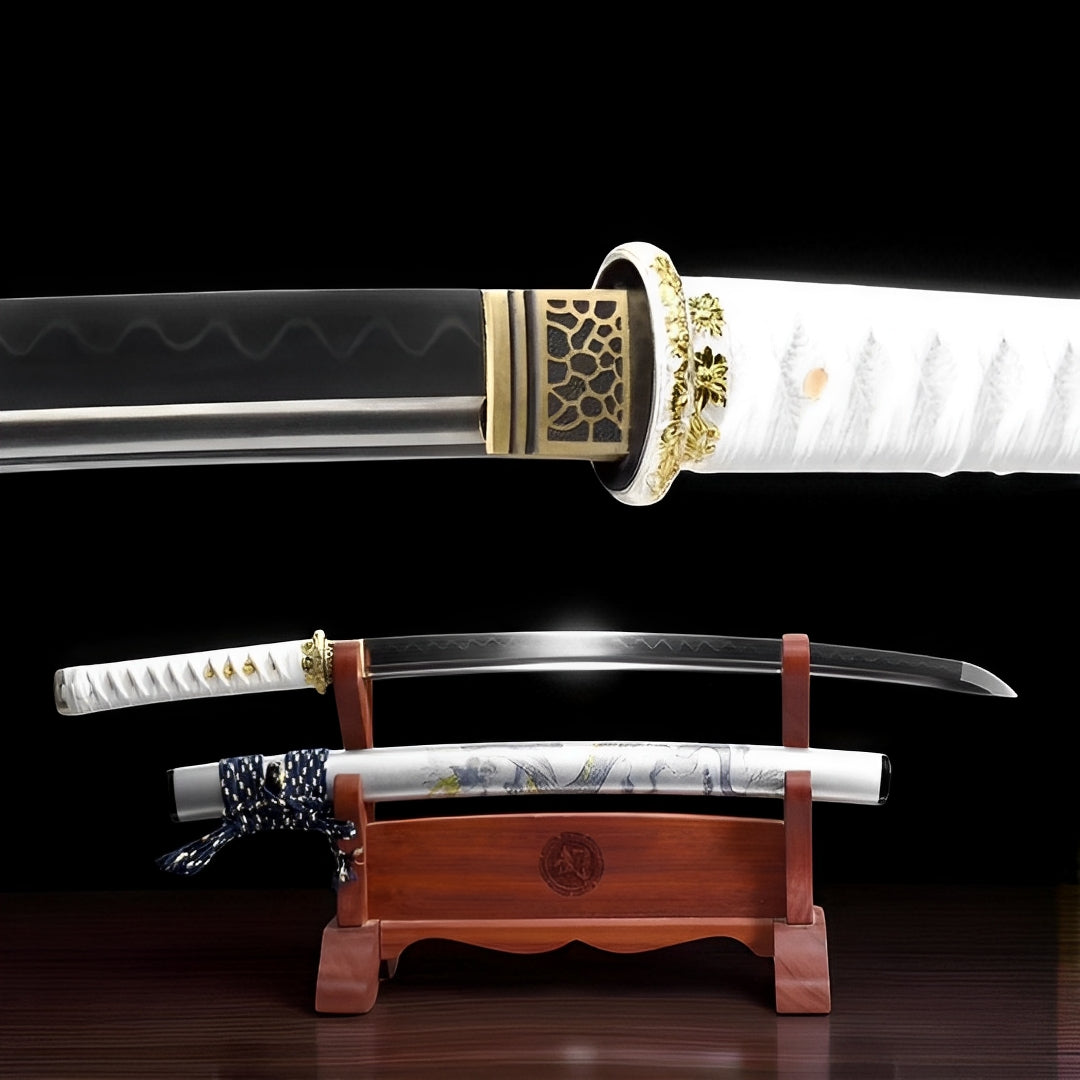
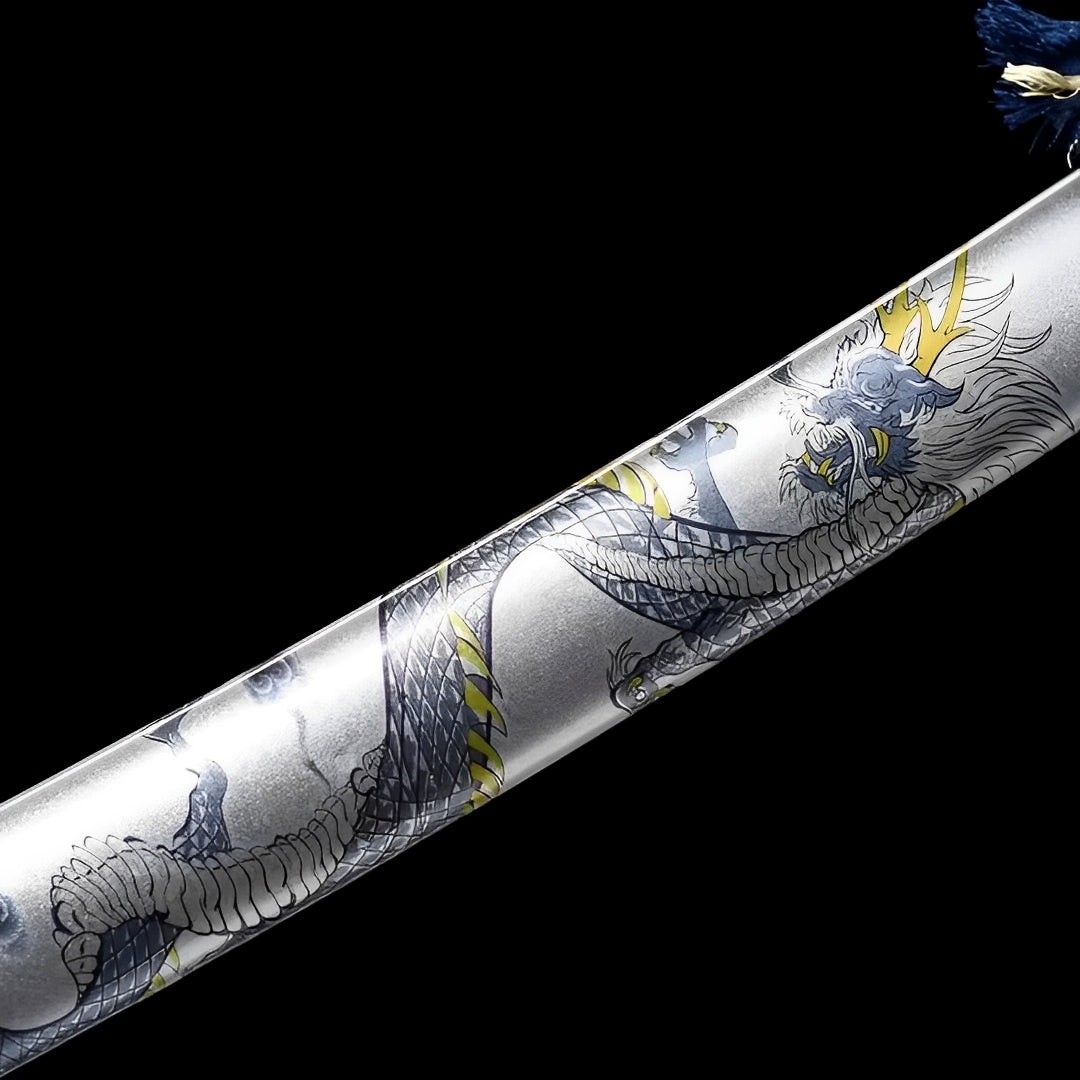
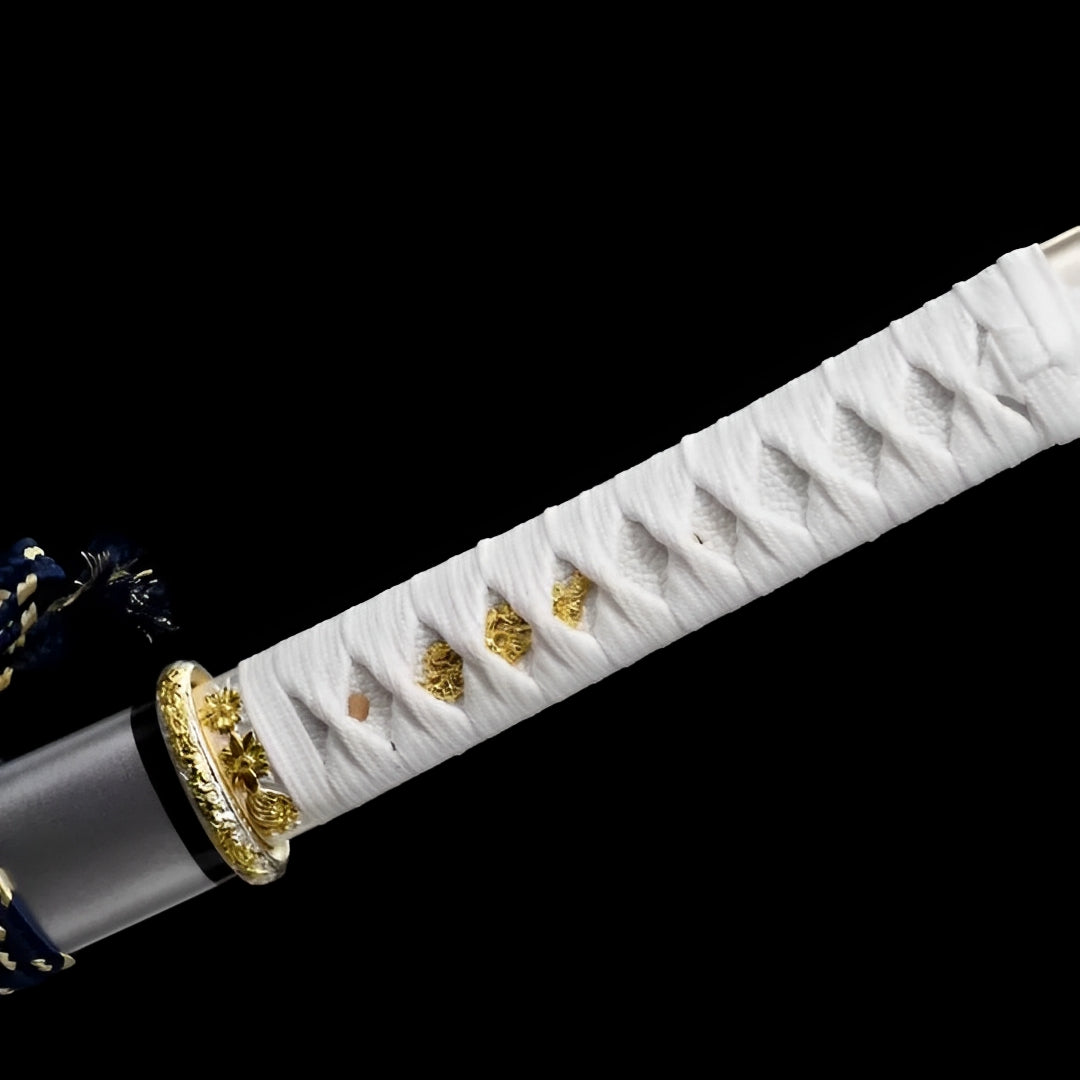
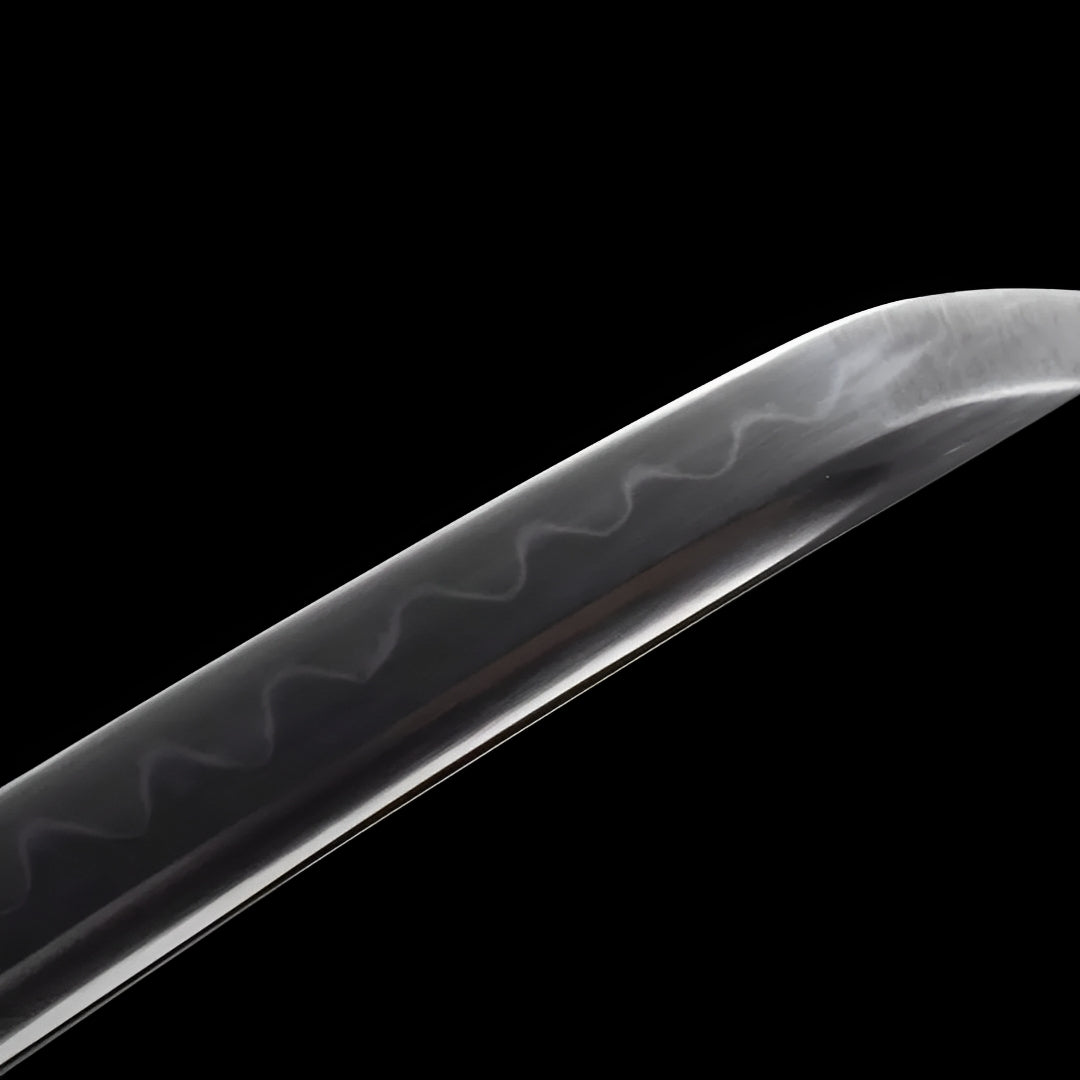
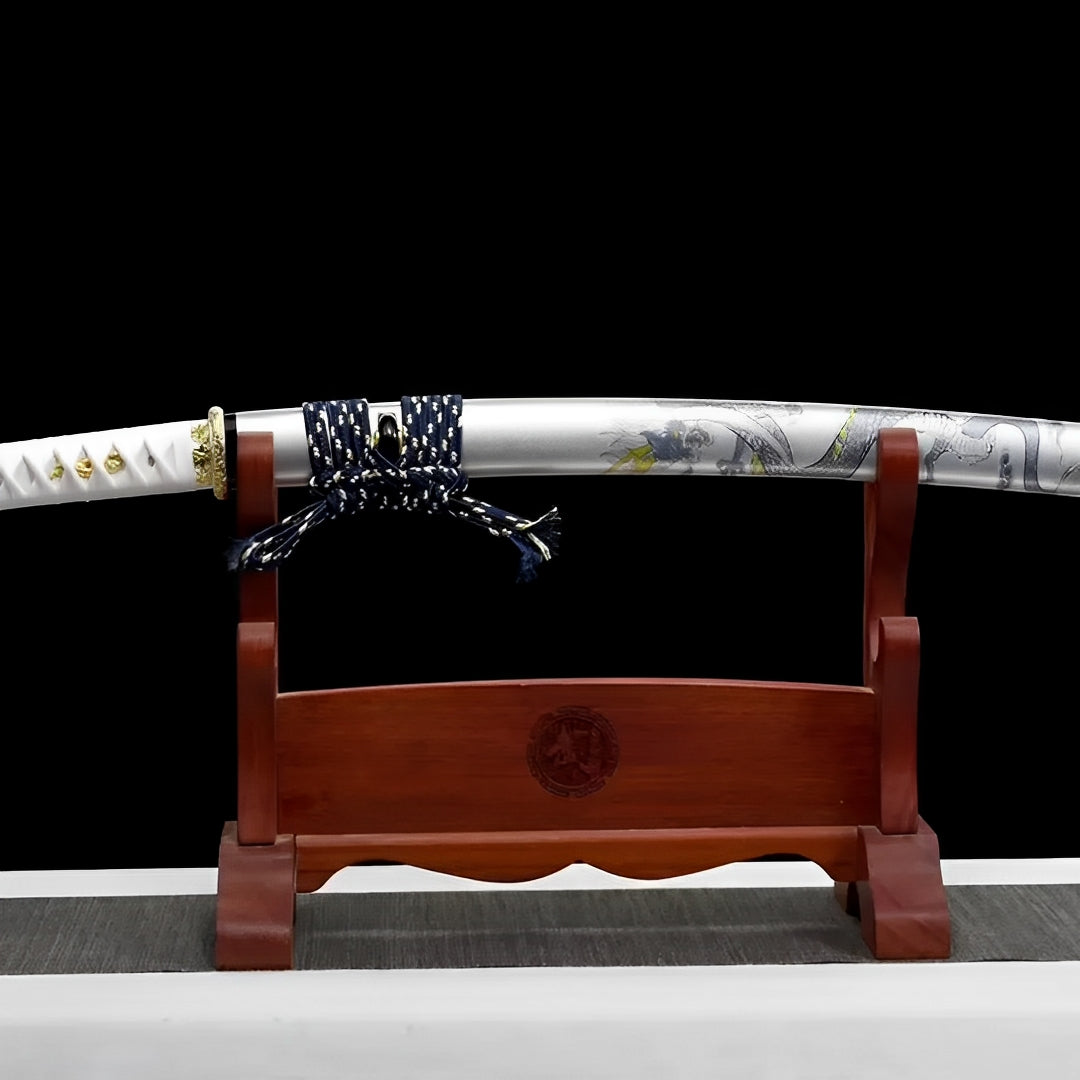
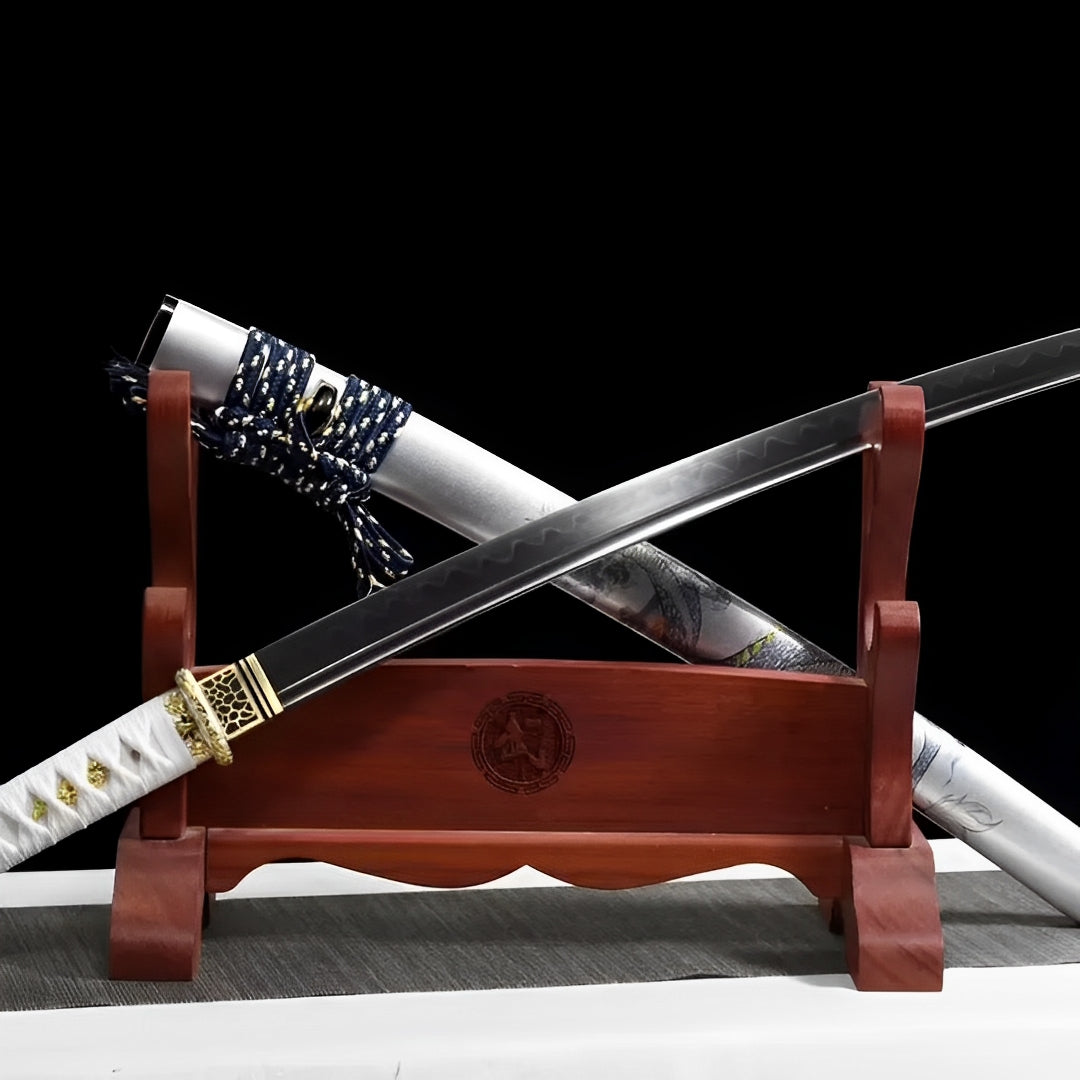
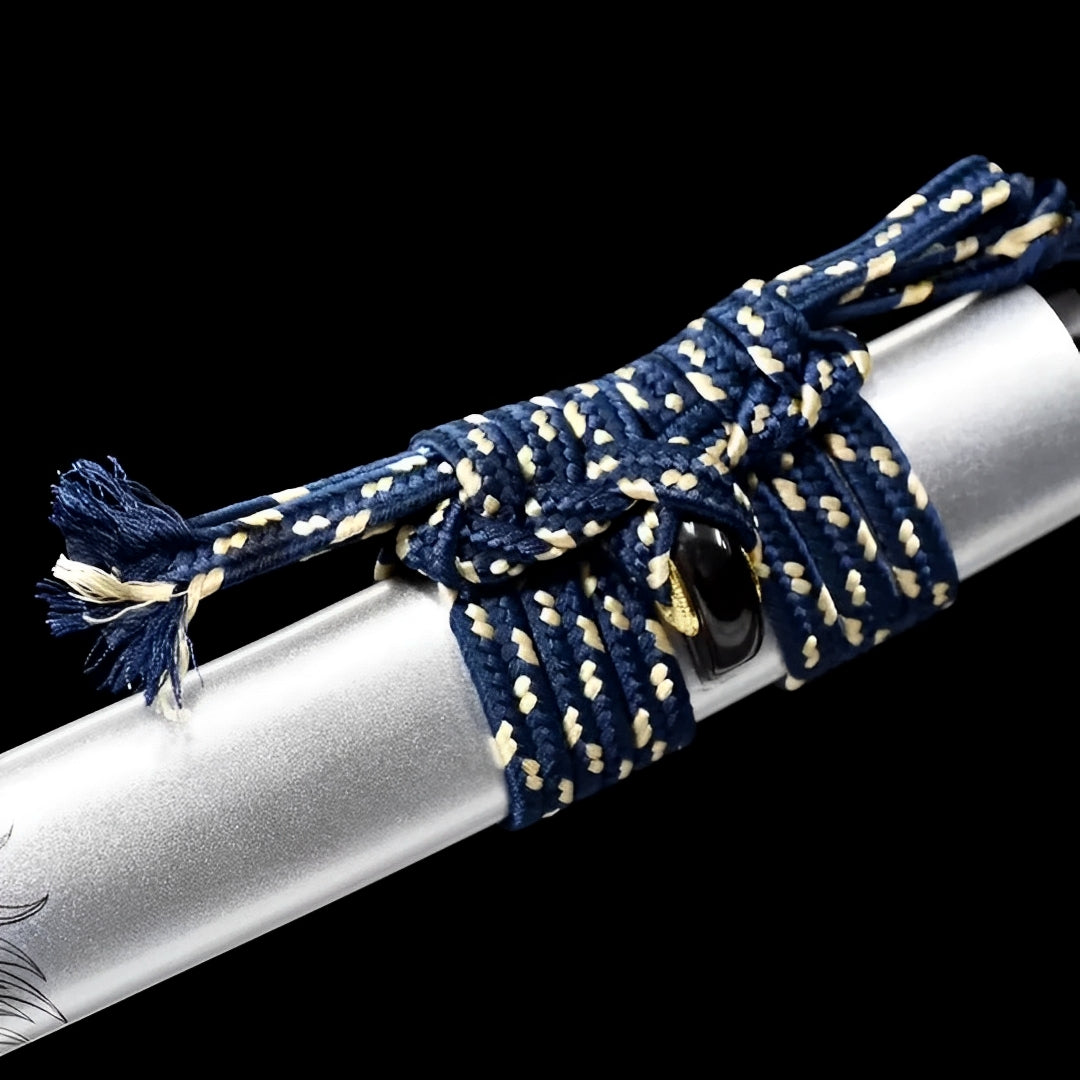
Why choose us
Ships within 48/72h
Forged Blade
Collector Quality
Trusted Globally
Inspired by Japan
Tsukihana Wakizashi (T10 Steel) - 月華
Popular upgrades
Free Shipping over $250
No Bots, No AI
Refund Guaranteed
Free Shipping over $250
No Bots, No AI
Our team is here to help with any questions or concerns.
We’re always happy to assist you — don’t hesitate to reach out.
Why choose us
Ships within 48/72h
Forged Blade
Collector Quality
Trusted Globally
Inspired by Japan

Tsukihana Wakizashi (T10 Steel) - 月華
Specifications
- Handcrafted
- SHARP blade
- Blade: T10 steel
- Genuine clay-tempered hamon
- Sageo / ITO made of cotton
- Synthetic ray skin on the tsuka
- Lacquered solid wood scabbard with dragon motif
- Tsuba made of copper
- Total length: 80 cm
- Blade length: 52 cm
- Blade width: 3.5 cm
- Blade thickness: 0.7 cm
-
Handle length: 25 cm
Tsukihana Wakizashi - Moonlight Flower Companion Blade
Embrace ephemeral beauty with the Tsukihana Wakizashi, where moonlight meets blossom in pristine white canvas. This poetic Japanese companion sword captures haiku's essence - delicate illustrations of windswept grasses dance across snow-white saya, golden chrysanthemums bloom eternally at the guard, while the blade itself mirrors clarity of full moon reflected in still pond. Not warrior's tool but poet's companion, proving that greatest strength sometimes wears gentlest face.
Moonlight Poetry in Steel
The name Tsukihana (月花 - moon and flowers) invokes two pillars of Japanese aesthetic philosophy. The moon represents clarity, transience, romantic longing - poets spent centuries composing verses about lunar beauty inspiring both joy and melancholy. Flowers embody mono no aware (物の哀れ) - the bittersweet awareness that all beauty fades, making present loveliness more precious through its impermanence.
This poetic wakizashi synthesizes those concepts into physical form. The pristine white saya suggests moonlight's pale glow - not harsh noon sun but gentle luminescence revealing rather than exposing. Against this lunar backdrop, delicate ink illustrations depict natural scenes with haiku-like economy - windswept grasses bending, perhaps bamboo stalks, autumn plants swaying.
The artwork style references sumi-e (ink painting) where masters captured essence through minimal brushstrokes. Each illustrated element earns its presence through necessity rather than decorative obligation. The negative space matters as much as the marks - emptiness allows imagination to complete compositions, inviting viewers to become co-creators rather than passive observers.
Traditional Japanese poetry rules demanded seasonal references (kigo - 季語) anchoring verses in specific times. The plants illustrated on this seasonal wakizashi likely represent autumn - the season samurai associated with both harvest abundance and approaching death, perfect metaphor for warrior existence balancing life's fullness against mortality's inevitability.
Warriors who appreciated poetry weren't considered less masculine but more complete. The ideal samurai mastered both bu (武 - martial arts) and bun (文 - literary arts), wielding brush as skillfully as blade. Carrying poetry-themed weapons announced cultural sophistication transcending mere combat proficiency.
Floral Grace Illustrated
The tsuba explodes with golden chrysanthemum magnificence - elaborate three-dimensional florals seeming to bloom outward from the disc's surface. Chrysanthemums (kiku - 菊) carry profound significance in Japanese culture, serving as imperial family crest and symbolizing longevity, nobility, and autumn's mature beauty.
Unlike roses representing youthful passion, chrysanthemums embody dignified elegance that improves with age. The sixteen-petal chrysanthemum specifically connects to imperial authority - the Emperor sits upon the Chrysanthemum Throne, and using this motif historically required permission or suggested noble connections.
The golden finish transforms practical guard into jewelry-quality sculpture. Each petal receives individual attention - subtle curves, dimensional depth, delicate veining. Quality metalwork like this requires weeks of labor from master craftsmen who've spent decades perfecting their techniques.
The raised floral design serves defensive purpose beyond beauty. During sword-to-sword contact, the three-dimensional surface can catch and redirect opponent's blade more effectively than flat guards. Form follows function even in decorative elements - Japanese craftsmanship refuses choosing between aesthetics and utility.
White and gold create color combination historically reserved for highest ranks. Temple altars, imperial garments, and aristocratic possessions featured this palette suggesting purity touched by divine radiance. A noble wakizashi bearing these colors announces itself as special occasion piece rather than daily-carry utility blade.
White Purity Philosophy
White occupies complex position in Japanese culture - representing purity and beginnings but also death and mourning. This duality makes white weapons particularly meaningful - they acknowledge blade's lethal purpose while suggesting wielder's moral purity, that violence serves righteousness rather than personal gain.
The pristine white saya demands courage. Unlike forgiving blacks hiding dirt or blues concealing fingerprints, white shows every contact, every imperfection. Choosing white announces commitment to meticulous care, willingness to maintain perfection despite effort required. This demanding nature filters casual collectors from serious curators.
The white ito wrapping with golden ornamental accents continues the purity theme while providing necessary grip texture. The clean color palette creates visual rest for eyes, suggesting calm meditation rather than aggressive confrontation. This peaceful aesthetic wakizashi proves that weapons needn't always project intimidation.
Traditional white-wrapped handles appeared on ceremonial tanto used for seppuku (ritual suicide) - the ultimate act of taking responsibility for failure or dishonor. While morbid to modern sensibilities, this connection adds philosophical weight. The white wakizashi reminds that owning weapons means accepting their consequences, that beauty and death coexist in warrior culture.
Modern collectors appreciate white pieces for their gallery-quality presentation. Against museum white walls or in glass cases, white swords create elegant compositions through their refined color discipline and sophisticated restraint.
Literary Heritage Connection
Japanese literary history overflows with references to swords as more than weapons - they're characters in stories, symbols in poetry, meditation objects in philosophical texts. The literary wakizashi acknowledges this cultural context where blades inspired as many words as they drew blood.
Famous haiku referenced moon and flowers constantly:
"The moon and flowers - forty-nine years - walking around, wasting time" - Issa
Samurai composing death poems before battle frequently invoked these images, finding comfort in nature's cyclical renewal. If cherry blossoms returned each spring despite scattering, perhaps warriors' spirits found similar renewal beyond mortal death.
The Tsukihana embodies this intersection of martial and literary worlds. It's weapon for warriors who owned poetry collections, who could quote classics during campaign downtime, who understood that cultivating aesthetic sensitivity prevented battle's brutality from consuming their humanity entirely.
Tea ceremony masters, ikebana practitioners, and calligraphy artists - many studied sword arts not for combat but for lessons about precision, patience, and accepting imperfection. The wakizashi served as meditation object connecting disparate artistic disciplines through shared philosophical foundations.
Collectors continuing this tradition don't necessarily practice martial arts but appreciate the cultural ecosystem where weapons, poetry, flower arranging, and tea drinking all expressed complementary aspects of cultivated existence. The Tsukihana represents that holistic worldview.
Elegant Collector Appeal
This artistic wakizashi attracts specific sensibilities - those drawn to Japanese poetry, appreciating minimal aesthetics, valuing cultural depth over martial aggression, or seeking pieces demonstrating that strength and gentleness coexist rather than oppose.
The white and gold palette works magnificently in varied contexts. Art galleries appreciate the museum-quality finishing. Traditional Japanese rooms welcome the cultural authenticity. Modern minimalist spaces embrace the restrained color discipline. Even maximalist eclectic collections benefit from the Tsukihana's visual calm providing rest amid more aggressive pieces.
Display considerations matter intensely with white swords. Background selection dramatically affects perception - dark walls make white float luminously, while lighter backgrounds create subtle tonal conversations. Glass cases with UV-filtering protect the white finish from yellowing while allowing the delicate artwork and golden florals to shine.
Perfect for collectors specializing in Japanese cultural artifacts beyond pure weaponry, interior designers curating spaces where every object carries meaning, literary enthusiasts appreciating physical manifestations of poetic concepts, martial artists studying the bun-bu ryodo (文武両道) philosophy balancing literary and martial paths, or anyone understanding that greatest collections tell stories transcending individual pieces.
The Tsukihana particularly appeals to those who've accumulated darker, more martial swords and now seek permission to embrace beauty without apology. It proves that warrior culture included room for flowers and moonlight alongside blood and steel, that completeness requires balancing seemingly opposite qualities.
Museums feature poetry-themed weapons specifically because they challenge stereotypes about samurai as one-dimensional killing machines. Private collectors preserving these nuanced pieces perform valuable service showing historical complexity.
Care Instructions: Handle white surfaces exclusively with clean hands or cotton gloves - oils show immediately. Store in protective bags when not displayed. Clean gently with products appropriate for white lacquer. Avoid direct sunlight causing yellowing over time. Polish golden fittings periodically maintaining their warm radiance. The blade requires standard care protocols. The demanding maintenance becomes ritual connecting owner to piece through attentive stewardship.
Where moonlight meets petal. The Tsukihana Wakizashi whispers poetry in steel.
Legal Disclaimer
By purchasing from Katana Corp, you acknowledge and agree that:
- You are at least 18 years of age (or the age of majority in your jurisdiction).
- You are solely responsible for verifying and complying with all local laws and import regulations before placing an order.
- Some countries prohibit the importation of swords entirely. Katana Corp is not responsible for orders delayed, seized, or refused by customs authorities.
- All katanas and related products are sold strictly as decorative and display items. They are not intended or certified for combat use.
- Depending on the jurisdiction, swords may legally be considered bladed weapons, subject to specific restrictions or prohibitions.
- Katana Corp disclaims all liability for any injury, damage, or legal consequences resulting from misuse, abuse, or unlawful use of its products.
For full details, please refer to our Terms of Service.
Care & Maintenance
To maintain your katana's appearance and performance over time, we recommend:
- Regularly wiping the blade with a soft cloth to remove fingerprints and moisture.
- Applying a light coat of choji oil to prevent rust (for carbon steel blades).
- Storing the sword in a dry place, preferably inside its saya.
- Avoiding direct contact with hard surfaces to preserve sharpness and finish.
For more care tips, check our full maintenance guide in the FAQ section.
Behind the Blade
Every katana we offer carries the essence of centuries-old craftsmanship.
More than just a weapon, the katana symbolizes discipline, honor, and mastery.
Our artisans draw inspiration from traditional forging methods to ensure each blade reflects the spirit of the samurai — strength, precision, and soul.
Owning one is not just about aesthetics — it’s about carrying a piece of that legacy.
User Experience
This katana is designed to offer a perfect balance between blade and handle.
Its ergonomic tsuka (handle) allows a secure two-handed grip, while the weight distribution ensures smooth, fluid movement.
Whether for training, display or cutting practice, handling feels natural and precise.
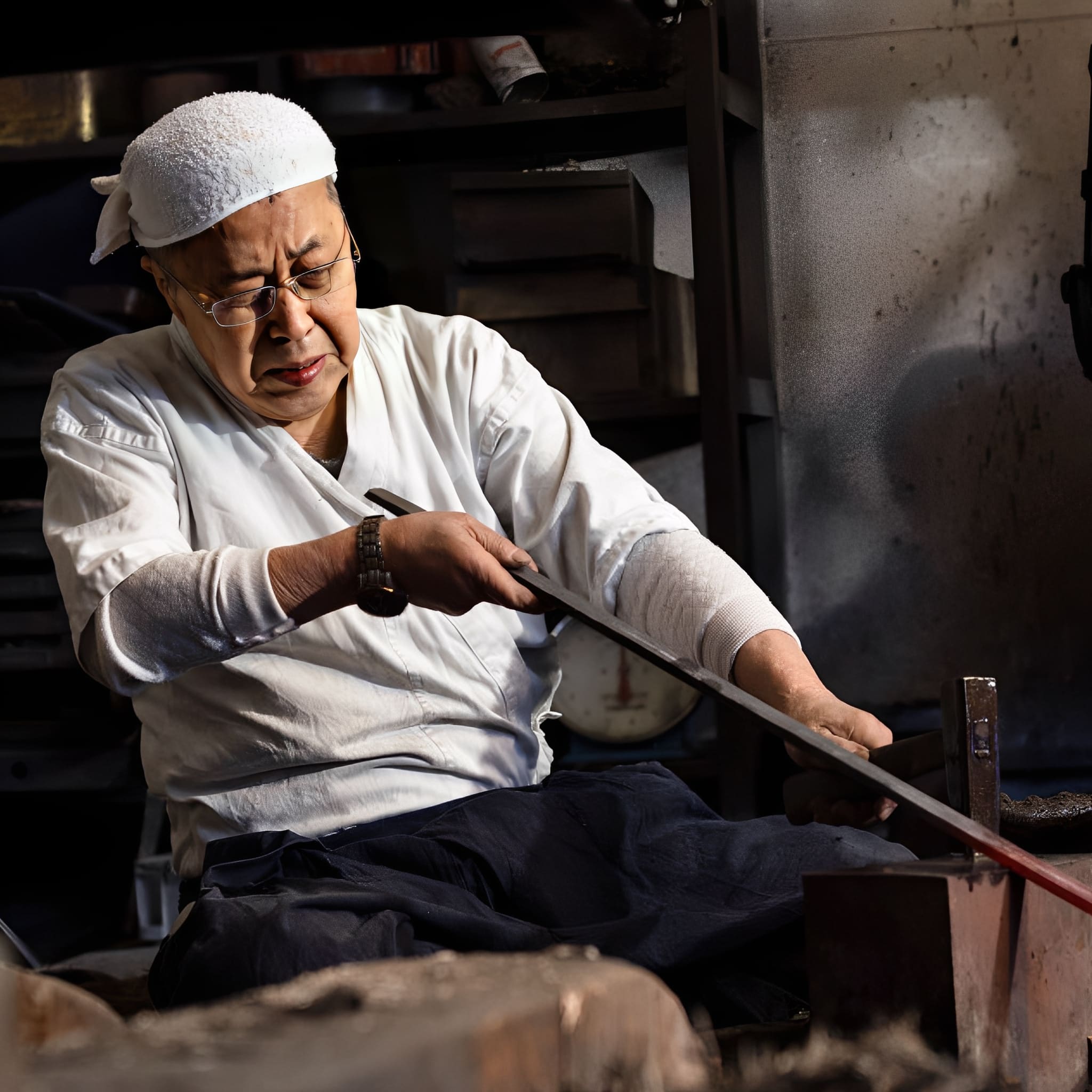
The Art of Traditional Forging
Each katana we craft is born from centuries of samurai tradition.
Our master smiths shape every blade by hand, folding the steel to achieve unmatched strength, flexibility, and beauty.
This time-honored process is not just about creating a weapon? it’s about preserving a legacy of discipline, honor, and artistry.

Materials Chosen Without Compromise
We select only the highest-grade steels and authentic fittings to ensure every katana is both a masterpiece and a reliable companion.
From the flawless hamon line to the perfectly balanced tang, each detail is carefully inspected to meet the highest standards of performance and aesthetics.
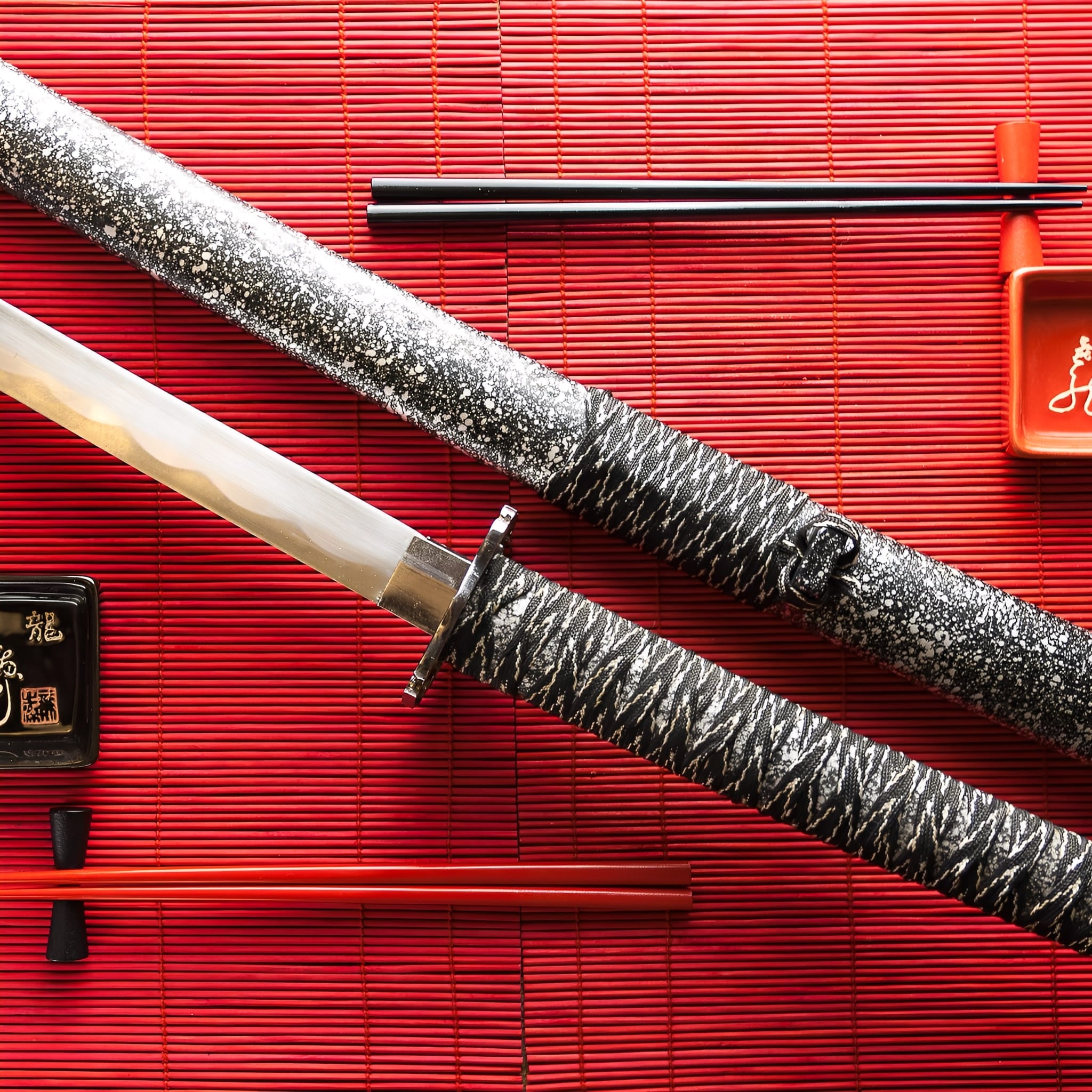
More Than a Sword, A Lifelong Legacy
Owning a handmade katana is an experience that goes beyond the blade itself. It’s holding history, tradition, and craftsmanship in your hands.
Whether displayed as a work of art or wielded with precision, your katana will stand as a symbol of timeless skill and dedication for generations to come.
-
Key Destinations
United States: 5–7 days
Canada: 5–7 days
Australia: 6–9 days
Denmark: 4–6 days
Netherlands: 3–5 days
Sweden: 4–6 days
Switzerland: 3–5 days
Finland: 5–7 days
Singapore: 6–8 days -
Central European Partners
France: 2–3 days
Germany: 3–5 days
Spain: 4–6 days
Italy: 4–6 days
Belgium: 3–5 days
Austria: 4–6 days
Ireland: 4–6 days
Poland: 4–6 days
Portugal: 4–6 days -
Extended EU Network
Czechia: 4–6 days
Hungary: 4–6 days
Slovakia: 4–6 days
Slovenia: 5–7 days
Romania: 5–7 days
Bulgaria: 5–7 days
Croatia: 5–7 days
Serbia: 5–7 days
Estonia: 5–7 days
Latvia: 5–7 days
Lithuania: 5–7 days
Luxembourg: 3–5 days
Greece: 5–8 days -
FAQ’s
Visit our FAQs page to find answers to common questions.